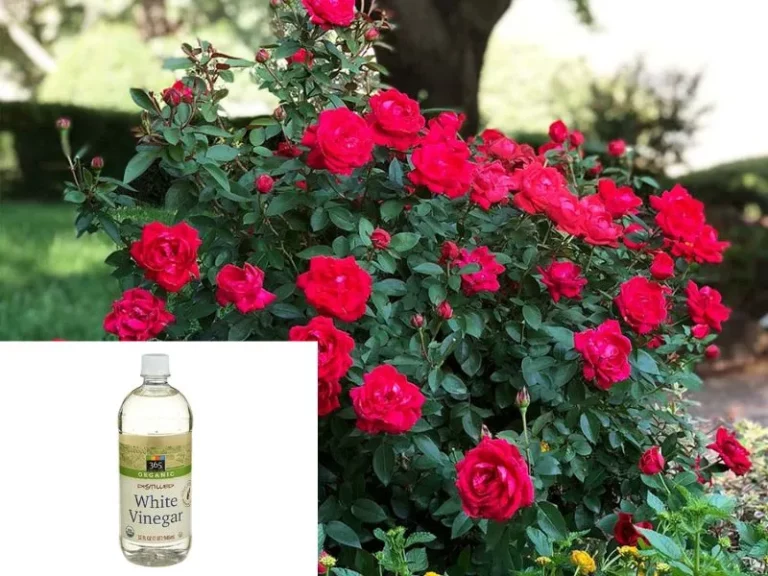Unlocking the Secrets of Drift Rose Problems: Expert Solutions Inside
From Louise: Passionate about gardening, I specialize in plant care and flower knowledge. I’m here to share my expertise and assist with your gardening queries. Feel free to ask any questions or seek advice on lawn care—I’ll respond within 24 hours!
Are you a fan of roses? Drift roses are a popular choice for gardeners due to their beautiful blooms and ease of care. However, like any plant, they can experience problems that can be frustrating for gardeners. In this article, we will explore some common drift rose problems and how to fix them.
Drift rose problems can range from pests and diseases to environmental factors and cultural practices. Preventive measures such as proper planting, watering, and fertilization can help reduce the likelihood of problems.
However, if issues do arise, there are treatment options available. In this article, we will cover some of the most common problems and how to identify and treat them.
Key Takeaways
- Drift roses can experience a range of problems, from pests and diseases to environmental factors and cultural practices.
- Preventive measures such as proper planting, watering, and fertilization can help reduce the likelihood of problems.
- If issues do arise, there are treatment options available.

Drift Rose Problems
Drift roses are a popular choice for gardeners due to their beauty, ease of care, and disease resistance. However, like any plant, drift roses can experience problems.
In this section, we will discuss some of the common issues that can affect drift roses and how to identify and address them.
Identification of Problems
The first step in addressing drift rose problems is to identify the issue. Here are some signs to look for:
- Yellowing leaves
- Brown or black spots on leaves
- Wilting or drooping leaves
- Stunted growth
- Lack of blooms
If you notice any of these symptoms, it’s important to investigate further to determine the cause of the problem.
Common Diseases
Drift roses are relatively disease-resistant, but they can still be susceptible to certain issues. Here are some common diseases that can affect drift roses:
| Disease | Symptoms | Treatment |
|---|---|---|
| Black spot | Black spots on leaves, defoliation | Fungicide, pruning affected leaves |
| Powdery mildew | White powdery coating on leaves | Fungicide, improve air circulation |
| Rust | Orange or brown spots on leaves | Fungicide, remove affected leaves |
Pest Issues
Pests can also cause problems for drift roses. Here are some common pests to watch out for:
| Pest | Symptoms | Treatment |
|---|---|---|
| Aphids | Sticky residue on leaves, stunted growth | Insecticidal soap, natural predators |
| Thrips | Silver or bronze-colored leaves, distorted growth | Insecticidal soap, natural predators |
| Spider mites | Fine webbing on leaves, yellowing leaves | Insecticidal soap, improve humidity |
It’s important to note that some problems can be caused by multiple issues. For example, yellowing leaves can be a sign of both disease and pest problems. If you’re unsure of the cause, it’s best to consult with a professional or your local nursery for advice.
Preventive Measures
To ensure that your drift roses grow healthy and look their best, you need to take preventive measures. These measures include proper planting, regular pruning, appropriate watering, and fertilization.
Proper Planting
When planting drift roses, make sure to choose a spot that has full sunlight exposure. Drift roses require at least 6-8 hours of full sunlight per day to thrive.
If you plant them in a shady area, they will not grow as well and may even die. It is also important to plant them in well-draining soil to prevent root rot.
Regular Pruning
Regular pruning is essential to keep drift roses looking their best. Prune your drift roses in early spring, before new growth appears. Remove any dead or damaged branches, as well as any branches that are crossing or rubbing against each other. This will improve air circulation and prevent the growth of diseases.
Appropriate Watering
Drift roses require consistent and appropriate watering to grow healthy. Water them deeply once a week, especially during hot and dry weather. Make sure to water at the base of the plant, not on the foliage. Avoid overwatering, as this can lead to root rot.
Fertilization
Fertilizing your drift roses will help them grow healthy and produce more blooms. Apply a balanced fertilizer in early spring, before new growth appears. Follow the instructions on the fertilizer package carefully, as over-fertilizing can damage the plant.
By following these preventive measures, you can ensure that your drift roses grow healthy and look their best. Proper planting, regular pruning, appropriate watering, and fertilization are all essential to keep your drift roses thriving.
Treatment Options
If you’re experiencing problems with your drift roses, there are a few treatment options available to you. Here are some natural remedies and chemical solutions that can help you get your roses back to their best.
Natural Remedies
- Pruning: One of the simplest ways to treat drift rose problems is by pruning. Remove any dead or diseased branches, as well as any branches that are rubbing against each other or growing in the wrong direction. This will help improve air circulation and reduce the risk of disease.
- Watering: Make sure your drift roses are getting enough water. They need about an inch of water per week, either from rainfall or irrigation. Water deeply and infrequently, rather than frequently and shallowly.
- Mulching: Apply a layer of organic mulch around the base of your drift roses. This will help retain moisture in the soil, suppress weeds, and regulate soil temperature.
- Companion Planting: Planting certain types of plants around your drift roses can help repel pests and attract beneficial insects. For example, marigolds and chrysanthemums can repel aphids, while lavender and dill can attract ladybugs.
Chemical Solutions
- Insecticides: If you’re dealing with a pest infestation, such as aphids or sawflies, you may need to use an insecticide. Choose a product that is labeled for use on roses, and follow the instructions carefully. Be sure to wear protective clothing and avoid spraying on windy days.
- Fungicides: If your drift roses are suffering from a fungal disease, such as black spot or powdery mildew, you may need to use a fungicide. Again, choose a product that is labeled for use on roses, and follow the instructions carefully.
- Systemic Treatments: Systemic treatments are absorbed by the plant and can provide long-lasting protection against pests and diseases. They are available in both insecticide and fungicide formulations.
Remember, prevention is always better than cure. By providing your drift roses with the right growing conditions and practicing good garden hygiene, you can reduce the risk of problems occurring in the first place.
How Do I Care for Drift Roses to Prevent Common Problems?
To keep drift roses healthy and prevent common problems, you should follow these tips:
- Water regularly: Drift roses need regular watering, especially during hot and dry weather. Make sure the soil around the plant is moist but not waterlogged.
- Fertilize: Use a slow-release fertilizer to feed your drift roses in the spring and summer. This will help promote healthy growth and blooming.
- Mulch: Apply a layer of organic mulch around the base of the plant to help retain moisture and regulate soil temperature.
- Watch for pests and diseases: Keep an eye out for common pests like aphids and spider mites, as well as diseases like black spot and powdery mildew. If you notice any issues, treat them promptly with an appropriate pesticide or fungicide.
Frequently Asked Questions (FAQs)
What are some tips for planting drift roses in my garden?
When planting drift roses in your garden, keep these tips in mind:
- Choose a sunny location: Drift roses need at least six hours of direct sunlight per day to thrive.
- Prepare the soil: Amend the soil with organic matter like compost or well-rotted manure to improve drainage and fertility.
- Dig a proper hole: Dig a hole that is twice as wide as the root ball and deep enough to accommodate the entire root system.
- Plant at the right depth: Make sure the top of the root ball is level with the surrounding soil.
- Water thoroughly: Water the plant thoroughly after planting to help settle the soil around the roots.
What is the bloom time for drift roses and how can I extend it?
Drift roses bloom in cycles throughout the growing season, typically every 5-6 weeks. To extend the bloom time, you can:
- Deadhead spent blooms: Remove faded flowers to encourage the plant to produce more blooms.
- Fertilize regularly: Use a slow-release fertilizer to promote healthy growth and blooming.
- Provide adequate water: Make sure the plant is getting enough water to support blooming.
Can drift roses be grown in containers, and if so, what are some container gardening tips?
Yes, drift roses can be grown in containers. When planting in containers, keep these tips in mind:
- Choose a large enough container: Use a container that is at least 18 inches in diameter and 18 inches deep to accommodate the plant’s root system.
- Use a well-draining potting mix: Choose a high-quality potting mix that is formulated for container gardening.
- Water regularly: Container-grown plants need more frequent watering than those planted in the ground.
- Fertilize regularly: Use a slow-release fertilizer to feed the plant throughout the growing season.
Are there any special pruning techniques I should use for drift roses to keep them healthy and looking their best?
To keep drift roses healthy and looking their best, follow these pruning tips:
- Prune in late winter or early spring: Prune the plant before new growth appears in the spring.
- Remove dead or damaged wood: Cut back any dead or damaged wood to healthy growth.
- Shape the plant: Use pruning shears to shape the plant as desired, removing any crossing or rubbing branches.
- Deadhead spent blooms: Remove faded flowers to encourage the plant to produce more blooms.
Conclusion
In conclusion, drift roses are a great addition to any garden due to their disease resistance and low maintenance. However, they are not completely problem-free. Here are some key takeaways to keep in mind when growing drift roses:
- Climate: Ensure that your drift roses are planted in an area that has the right climate for them to thrive. They prefer warm and sunny weather, so planting them in a shady area is not recommended.
- Water: Make sure your drift roses are getting enough water. They need to be watered regularly, especially during hot and dry weather. However, be careful not to overwater them, as this can lead to root rot.
- Sunlight: Drift roses require at least 6-8 hours of full sunlight per day to grow properly. If they are not getting enough sunlight, they may grow slowly or not at all.
- Deadheading: While not required, deadheading your drift roses will encourage reblooming and give them a nicer appearance.
- Disease resistance: Drift roses are relatively problem-free in many areas and have excellent disease resistance to rust, powdery mildew, and black spot. However, they can be susceptible to chilli thrips and Cercospora leafspot.
- Maintenance: Drift roses are easy to maintain. Simply clip them down to half their end-of-winter size and fertilize with a controlled-release fertilizer when strong growth begins in April.
By keeping these tips in mind, you can ensure that your drift roses will look beautiful and healthy all season long. Remember to give them the care they need, and they will reward you with their stunning blooms.






